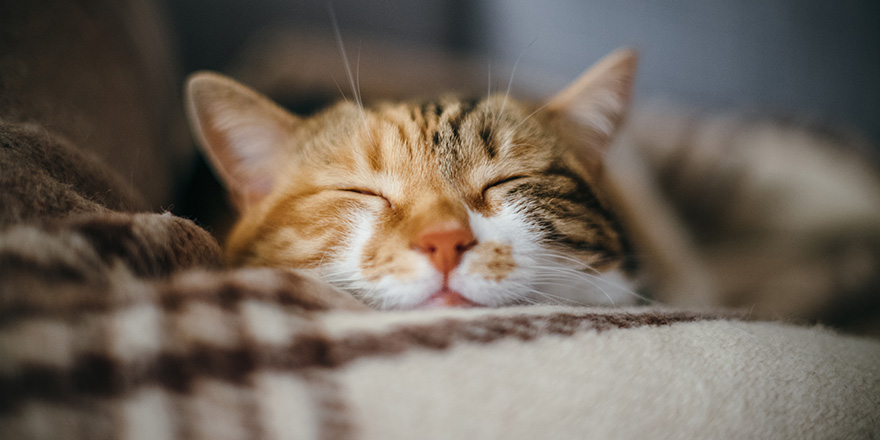Have a playful cat that turns a bit vicious around other males and won’t leave the girls alone? This is common behavior when a tomcat is left unneutered because they give in to their instincts when they reach sexual maturity. For your boy cat, that means a lot of aggression and fighting. For girl cats, you can expect constant yowling during their heats. Most cats who are neutered experience a severe reduction in these unideal behaviors, which is great for multi-cat households and homes with young children.
Why Neuter Your Cat?
There are plenty of reasons to neuter your cat, even though the cost of the procedure can cause cat owners to delay the surgery. Without neutering, your cat can experience serious complications with their health later in life.
Female cats that are spayed have a reduced chance of developing mammary cancer and pyometra. Both of these conditions are often fatal and can be costly to treat. If your female cat lives outdoors, there’s also the risk that they could become pregnant. As cute as young kittens are, a litter of them is costly to care for, and a cat can give birth to up to five litters a year!
Male cats, on the other hand, can be difficult pets to have at home when they haven’t been neutered. An uncastrated cat will be territorial when they’re at home, and constantly on the prowl for female companions when they’re outdoors. Their need to mate often causes tension between other cats in the neighborhood, and you shouldn’t be surprised if you see your cat come back with wounds from fighting. These fights can become vicious and will happen even if you keep your cats indoors.
Top Reasons to Neuter Your Cats
- Prevents cats from having unplanned kittens.
- Stops your cat from developing various health conditions related to their reproductive organs.
- Shows responsibility as a pet owner.
- Reduces the number of unwanted cats in your area.
- Neutered female cats won’t display heat behaviors, such as yowling and spraying.
- Neutered cats are typically more friendly because they aren’t driven by hormones and instincts.
- Puts a stop to wandering tomcats.

What to Expect During Your Cat’s Appointment
The Day Before
The day before your appointment, you will likely be contacted by your vet to remind you to fast your cat. This means that you should not feed your cat for a certain amount of hours before their surgery. It’s likely that you’ll be asked to either stop feeding them the night before or to not feed them the morning of their appointment.
Doing this helps prevent your pet’s risk of choking on vomit while they’re under anesthesia, among other issues. It may seem cruel to feed your other cats and not the one that is being neutered, but you can prevent your own guilt by separating your cats and choosing a good appointment time. Early morning appointments will mean that you can’t feed your cat the night before, while an afternoon appointment usually means that you can’t give your cat breakfast.
Some vets may ask you to come in with your cat before the neutering appointment so that they can perform a health check.
Your Appointment
After arriving at your veterinary practice, your cat will stay with you while you pay for the procedure and fill out paperwork. If you’ve welcomed a new cat into the family, you can combine this appointment and have your cat’s microchip put in at the same time.
Once this is finished, your cat will be taken and you’ll be told when to come back for them. You usually won’t stay with your cat while they’re in surgery, as you’ll be in the way of other pet owners coming in for appointments. Instead, you’ll be given a time to return and get your cat – usually around 2 to 4 hours later. Because of this, it’s best to choose a local veterinary practice to perform the procedure.
During Your Cat’s Appointment
Your vet will put your cat under general anesthesia so that they don’t feel any discomfort or pain during the process.
For a male cat, a small surgical incision is made on the scrotum, from which the vet can then remove the cat’s testes. The incisions for a male cat’s operation are so small that sutures are regularly not required.
For a female cat, the operation is more complex. Under general anesthesia, an incision is made on your cat’s flank after the area is shaved of fur. Through this incision, the cat’s ovaries and uterus are removed, and then the incision is sewn shut. Female cats will need to return to the vet around a week later to have the sutures removed.
Potential Complications
Females are usually more at risk during the neutering process than male cats because the procedure is more involved. Possible risks for either sex of cat include:
- Infection of the incision site
- Reactions to pain medications or anesthesia
- Gastrointestinal upset after surgery
- Bleeding around the surgical site
- Swelling caused by fluid build-up
- Inflammation

How Neutered Cats Recover
Wondering what to expect after neutering cats or kittens that are of age? Many first-time cat owners haven’t cared for a cat post-surgery before, but there’s very little to worry about after the first night.
If anything serious is going to happen during your cat’s recovery period, it’s going to occur during the first 24 hours after surgery. The good news is that problems arise in very rare cases, but it is possible for your kitten to experience issues. Neutering is a medical procedure, and though it’s more involved for female cats than male cats, there are still incision wounds to worry about, among other things.
Your vet will give you aftercare instructions when you pick up your cat, as well as pain medication that they should take. Too much activity post-surgical procedure can harm your cat, so it’s important to let them sleep as much as they want and not encourage them to play during their recovery. Cats recover fast, and you’ll see them return to their normal behavior pretty quickly.
The Healing Process
It may take a week or two for your cat to fully recover. If you’re concerned that your cat’s incision site looks inflamed, is bleeding or has bloody discharge, your cat isn’t eating or is lethargic, contact your vet immediately.
Follow the advice given to you by your vet, including offering your cat a small amount of wet food once you return home and giving them provided long-acting pain medicine. Keep a close eye on them until the next morning, and don’t touch their surgical site or allow them to lick at it. Female cats are often given cones, which look like big, plastic Elizabethan collars, to prevent licking.
If you have other kitties at home, it might be best to keep your post-surgery cat separated for a few days while they recover. Other pets can disrupt your cat’s healing, so offer them a small room to themselves and see how they react to the situation. Be sure to supply food, fresh water, and a litter box that has low sides. If your cat seems energetic and happy the following morning, you can consider letting them roam the house as normal, but do not let them outside!
The contents of the www.mypetneedsthat.com website, such as text, graphics, images, and other material contained on this site (“Content”) are for informational purposes only.
The Content is not intended to be a substitute for professional veterinarian advice, diagnosis, or treatment.
Always seek the advice of your veterinarian with any questions you may have regarding the medical condition of your pet.
Never disregard professional advice or delay in seeking it because of something you have read on this website.
Sources:
- Spaying and Neutering, Cornell Feline Health Center
- Monitoring Cats During TNR Spay/Neuter Recovery, Animal Alliance NYC
FAQs:
The cost of neuter surgery can vary, depending on your veterinary practice's prices, the area you live in, and whether or not you're entitled to any discounts through governmental or pet organization schemes. It's also more expensive to neuter a female cat. Private vets can charge up to $400, but a shelter may only charge $50.
Spaying and neutering are the same thing, with neutering being the term used to describe the surgery that prevents pets from being able to conceive. The difference lies between spaying and castrating. A female cat has their uterus removed, and this is called spaying. A male cat is castrated, which means that their testicles are removed.
Note: The advice provided in this post is intended for informational purposes and does not constitute medical advice regarding pets. For an accurate diagnosis of your pet's condition, please make an appointment with your vet.







